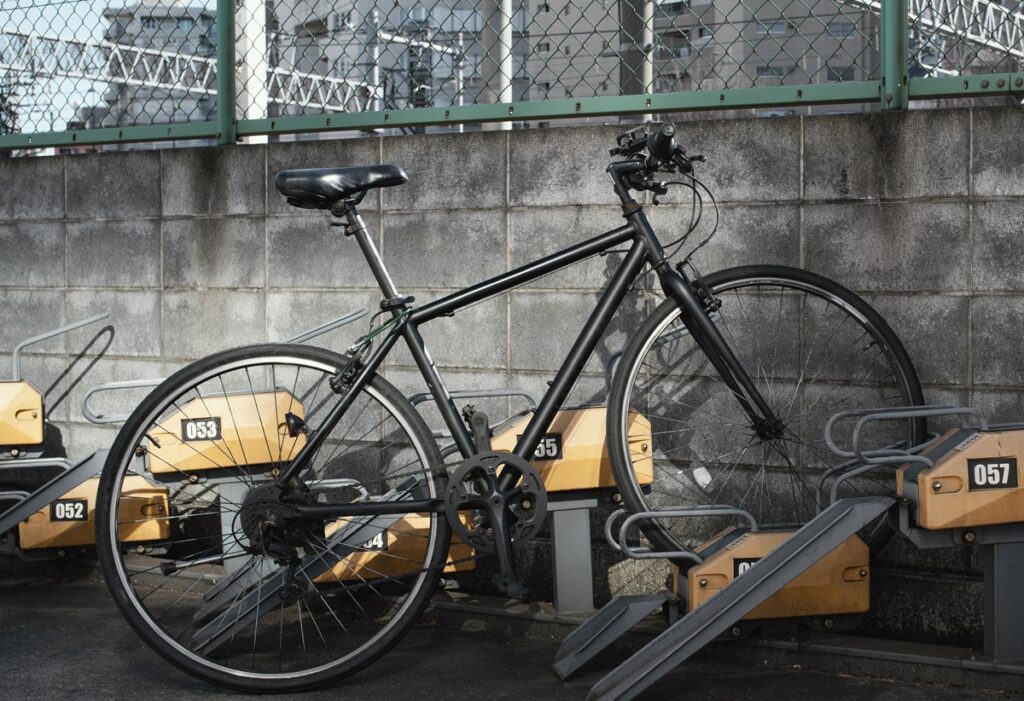Purchasing a pre-owned hitch, trunk or roof bike rack can save money over a new or used thule bike rack. But you must take precautions loading bikes onto a used rack to prevent accidents or bike damage in transit.
By methodically inspecting the rack, loading bikes sequentially and properly fastening straps, you can transport bikes safely and stress-free even on previously owned racks.
Thoroughly Inspect the Rack’s Condition
Before placing any bikes, examine the rack closely for defects like rust, loose parts or cracked plastic housing.
Check that adjustable arms slide smoothly without catching. Confirm tires or frames won’t contact the vehicle.
Identify any worn parts needing replacement. Pay particular attention to strap condition. Only load bikes if the rack checks out.
Understand Weight Limits and Bike Spacing
Consult the rack’s manual or plate sticker to check the maximum number of bikes and weight it can handle. Space out bikes on the rack accordingly, leaving 2-4 inches between handlebars depending on rack width.
Don’t exceed specified limits; balance your bike weight evenly on the rack. Improper loading risks bikes touching or rack failure.
Load Heaviest Bikes Nearest Vehicle
Position the heaviest bikes closest to the vehicle on the rack arms, then load lighter bikes outward. Bottom-heavy loading prevents the rack from tipping when loaded. A low center of gravity creates stability. Just ensure larger bikes don’t obstruct rear vehicle access.
Point Front Wheels Forward
Aim front wheels straight forward once mounted in the rack to minimize wind resistance. Binding handlebars slightly left helps counteract winds from passing vehicles that might push bikes sideways. Turning front forks sideways risks catching crosswinds that alter bike direction.
Securely Attach Each Bike Individually
Don’t rely on straps alone to hold bikes. Use the rack’s built-in frame clamps or arm hooks to secure each bike’s frame, not just the wheels. This stabilizes movement and prevents the bike from vibrating or twisting. Check that clamps don’t crack carbon fiber frames.
Strap Tires and Frames Separately
Wrap straps tightly around each bike tire to compress the suspension and immobilize the wheels. Also, run a strap around the top tube or downtube of the frame on at least two contact points. This binds both the frame and wheels. Check that straps don’t rub against frames.
Double-Check Straps During Transit
Vibrations can loosen straps over time. When you stop during the trip, do a walkaround to verify strap tightness. Tug firmly on straps – they shouldn’t budge. Loose straps require immediate tightening. Recheck after hitting rough roads or braking hard.
Pad Frames in Contact Points
Use old tubes or foam as protection padding wherever the bike frame touches the rack. This prevents paint scratches and damage to the frame tubing. Handlebars should also have rubber spacers where they might contact other bike’s tires or frames.

Avoid Loose Accessories
Remove all loose accessories like pumps, bottles, bags, and phone mounts which could vibrate and detach in transit.
Make sure seatpost bags and other mounted gear are firmly secured with secondary straps. Remove reflectors.
Taking a few extra minutes to inspect carefully, balance, and secure bikes on a used rack provides peace of mind your bikes will arrive safe and damage-free.Always double-check straps, padding, and accessory removal. Follow these tips for confidently used rack loading.

